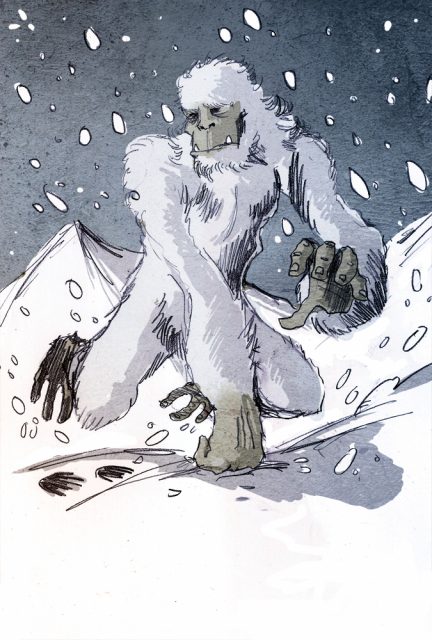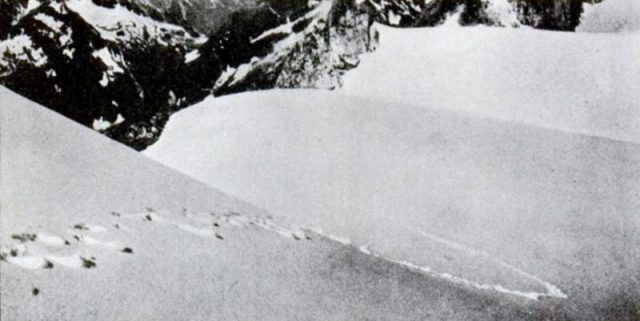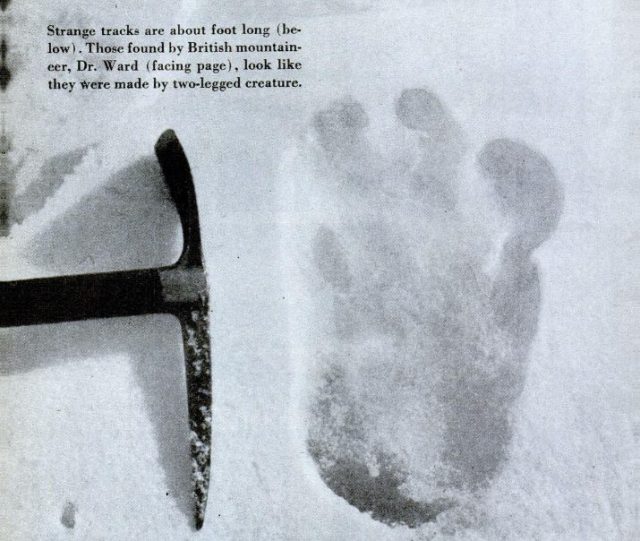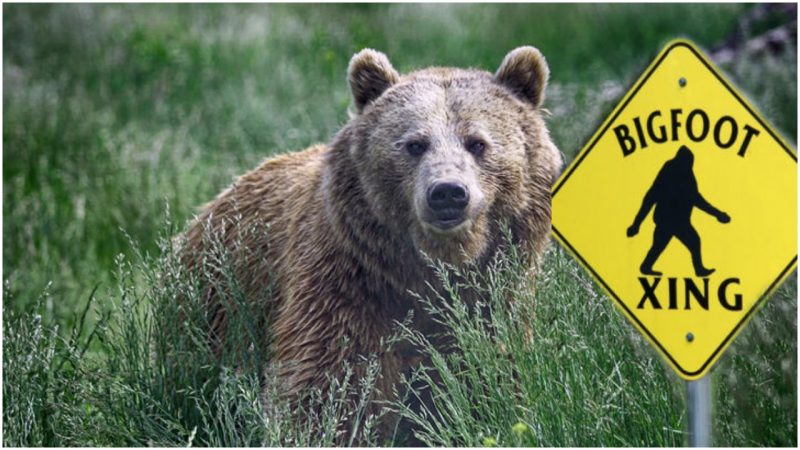For most of the 20th century, people across Britain and the United States have been intrigued by stories about the yeti, a huge white ape-like creature that has also earned the nickname the Abominable Snowman. The first reported yeti sightings came in the early 1920s, one of which, in 1925, came via a Greek photographer named N.A. Tombazi. He recorded seeing a mysterious creature while on a British-led geological expedition high in the Himalayas that, in his own words, must have been a goose-bump raising moment.
Tombazi compared the creature’s silhouette to that of a human, which “showed up dark against the snow and, as far as I could make out wore no clothes.” Before he was able to take any photographs of the creature, it disappeared.
He did, however, manage to spot its footprints left in the snow. “I examined the footprints, which were clearly visible on the surface of the snow. They were similar in shape to those of a man, but only six to seven inches long by four inches wide at the broadest part of the foot.” His record suggests that the footprints showed five toes, the instep being entirely clear, but the heel apparently indistinct.
Little did he knew that he had possibly witnessed a yeti, the stories of which, and alleged sightings of, would only multiply in the coming decades. Tracks attributed to yeti were found and documented with photographs as early as 1951, the 1950s being a period when at least two known expeditions set out in search of this unidentified creature inhabiting the roof of the world.

Claims of sightings have continued over the years, but still a yeti has never been found. The reason, according to the latest research, is most likely that no such creature exists. Published in the Proceedings of the Royal Society B in November 2017, the results from DNA analysis of samples that had been purported as the remains of the elusive Abominable Snowman show that they are actually artifacts of bears, apart from one, which is the tooth of a dog.
Charlotte Lindqvist, one of the leading scientists on the recent research project and an Associate Professor of the Department of Biological Sciences at the University of Buffalo, has affirmed that the research findings “strongly suggest that the biological underpinnings of the Yeti legend can be found in local bears.”

The team sequenced the mitochondrial genome from a number of “yeti” samples gathered from museums and private collections and compared them to a national zoological DNA database. They concluded that one creature was the result of a creative taxidermist’s imagination, a composition of bear hair and dogs teeth that was “found” by Nazi party members in the 1930s and later added to the collection at the Messner Mountain Museum. Of the others, most were deemed to be samples of the critically endangered Himalayan brown bear, the rest being Tibetan brown bear or Asian black bear.
Lindqvist notes that the genome of each sample matches the type of bear that lives in the location they came from. And while they have demonstrated that none of these animals were yeti, the team is pleased to have some new information about the evolution of Himalayan and Tibetan brown bears, two distinct sub-species which are thought to have split from a common ancestor 650,000 years ago.

“Scientific work can help explore myths such as the Yeti,” said Lindqvist. She also points out that, despite disproving claims that any of these artifacts were examples of yeti, it doesn’t prove that such a creature definitely does not exist. The director of the Center for Fortean Zoology, a popular cryptozoology organisation, agrees: “I think there is still a possibility that there are unknown species of higher primate which are still awaiting discovery in what used to be Soviet central Asia.”
In this world full of science and knowledge, we all secretly want to believe there is something unexplained lurking out of sight. So let’s not consign the yeti to the dustbin just yet–the mystery continues to live on.
